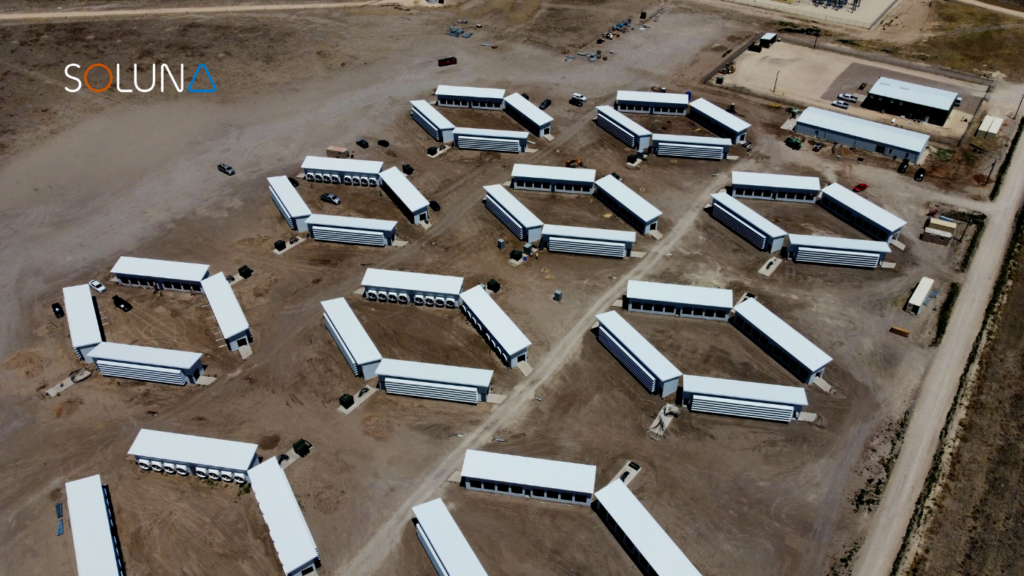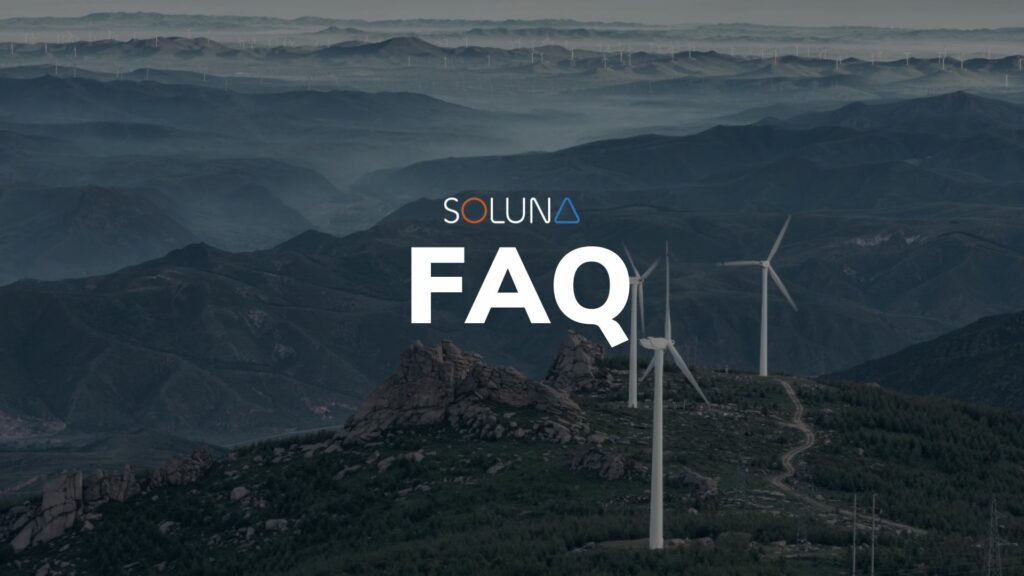By John Belizaire, CEO
It’s 8:00 am on a cool fall day in Western Texas.
A gust of wind kicks off a familiar process near a cattle ranch.
At the top of a 100m (330ft) tower, a set of blades with a diameter spanning the length of a football field begin to whirl, making their signature “whoosh, whoosh, whoosh,” sound.
Within seconds, a herd of electrons hurries across a microgrid making a pitstop at a local high-performance computing data center. Inside, a big “AI brain” awakes to decide the destination of the herd across a global smart-grid system.
Some of these electrons will feed strategically placed mobile data centers that help secure a global digital monetary system. Some will make their way to smart homes in dense cities that use just as much power as they need — and dutifully store the rest in super-efficient batteries installed in the garage. And, the rest of the herd will make its way to large “cognitive” centers that help manage this intra-planetary grid system that uses nearly zero fossil fuels.
I believe this brave new world is only a decade away. And, it will be made possible by a phenomenon known as “infrastructure inversion.”
What is infrastructure inversion?
Disruptive innovation is about creating new markets and value networks that eventually disrupt existing ones. Not all innovation is disruptive. For instance, the automobile was not disruptive unto itself, but Ford’s Model-T built using mass production transformed the transportation market.
All disruptive technology goes through a period of limited adoption. A resistance that spawns statements like, “This does not work so well!” This is because all disruptive technology has to start out living on old infrastructure. The Model-T, for example, had to run on dirt roads built for horses.
Eventually, pressure builds as the technology reaches an inflection point. It outpaces the current infrastructure. A new infrastructure is then built for the disruption and as the old technology starts to run on top of this new infrastructure — a sort of inversion occurs. As the number of cars far exceeded horses, the dirt roads were replaced with paved ones supporting both the Model-T’s and the horses.
This phenomenon, coined by Andreas Antonopoulos, a famous author, speaker, and bitcoin evangelist, is now referred to as infrastructure inversion.
One might say infrastructure inversion is a key marker for disruptive change. It has happened a few times throughout history, the most famous starting in the late 90s, during the rise of the Internet.
Voice to Data Networks — The Internet Inversion
Today we enjoy the ability to stream movies, talk to anyone in the world, and connect with our friends and family through those little “supercomputers” that fit snuggly in our pockets. These luxuries are enabled by a worldwide infrastructure that easily carries voice and data to far reaches of the planet.
Depending on how old you are, you may not remember how life was before the Internet or the smartphone. Terms like plain old telephone service (POTS), computer bulletin board service (BBS), dial-up modem, Mosaic, and the World Wide Web might sound vaguely familiar.
These early forms of the internet ran on top of an old infrastructure designed to carry our voices.
A human voice is a one-kilohertz signal that is difficult to transmit over long distances. The “baby bells” (telecom companies back then) of the day devised a system that narrows the band to solve this problem. This solution is known as the plain old telephone service — purpose-built to carry voice calls long distances.
Ever heard of CompuServe or America Online (AOL)? These companies were the gorillas in the early market of online service providers — helping people travel beyond their homes to online communities.
They delivered these experiences via devices called dial-up modems from companies like Hayes and US Robotics. These devices are what facilitated these new online communities to run on top of the old voice infrastructure. They would use a signature series of “screeching” sounds to fool the POTS system into thinking that voice was being transmitted, not data. The frequency modulation enabled users to download software, join forums, send messages, and simply just connect.
(If you are curious or nostalgic, this is what dial-up sounded like.)
At first, the telecom companies were against this brave new world running on their networks. But, by the mid-to-late 90s with the advent of the Mosaic web browser and Tim Berners Lee’s “W-W-W”, the Internet became the most popular destination for computer users.
By the time people were “dancing like it’s 1999”, phone companies had entered the internet service provider business and retooled their networks to carry data. And, our voices became just another form of data. Today, our laughs and cries travel across the Internet on global data-only networks, our phones are wireless and fit in our pockets. And, the Internet is old infrastructure — a complete inversion.
The Finance Inversion
Andreas Antonopoulos travels far and wide to deliver talks about infrastructure inversion and why Bitcoin is a catalyst for the next inversion. As he puts it, “if you need bitcoin to be like today’s financial system, just slow it down, and charge large fees to move money.”
Today, “the internet of money” runs on old banking systems. Users must be connected to centralized exchanges and current banking systems. These are the equivalent of dial-up modems for the financial services industry.
Antonopoulos believes that as killer applications (like e-commerce, or social media did for the Internet) emerge they will ignite an inversion in finance. First, the banks will resist, then they will go along with it, and then they will run all of their traditional operations on Satoshi’s distributed ledger technology.
This view has sparked a global dialogue on the role of Bitcoin and its ability to transform the financial services industry. But, what people aren’t talking about is how Bitcoin could lead to an inversion in energy infrastructure.
The Problem with Renewable Energy Today
Fossil fuel continues to dominate energy production in the United States — only around 17 percent of its energy comes from renewable sources. The prevailing reason is the fact that renewable energy is intermittent and in some instances, located too far away from population centers to be economical. In addition, bursts of power from wind or solar farms — with more energy than is needed at the time — can have catastrophic effects on a grid.
The intermittency problem is commonly referred to as variable renewable energy (VRE). The current solution to VRE is to store the excess energy produced by wind farms or solar arrays in batteries which can be very costly. Or, more commonly, the energy site is simply shut down — a process called “curtailment.”
Curtailment is prevalent among the world’s largest economies. China has been reported to have curtailed over 12 percent of its wind power in 2017, an amount equivalent to $ 3 billion. The US is no different. In fact, California’s curtailment has reached as high as 20–30 percent during peak times.
Despite the declining development costs of green power plants, curtailment has become an impediment to investing in new energy generation plants.
We effectively have this new (green) technology built on old infrastructure. The US grid system is purpose-built for fossil fuels which by contrast offer low-cost, reliable power when and where it is needed.
Sound familiar?
Just like dial-up modems fooled voice networks into thinking they were carrying voice (and not data), curtailment fools the grid system into thinking renewable energy is just another form of smooth fossil fuel. Ironically, Bitcoin and a host of other disruptive technologies may put an end to this just like the world wide web did.
Renewable Energy Inversion
Last year, I read two fascinating reports that got me thinking about an inversion in energy infrastructure.
One report from Node Blockchain takes a look at the positive externalities of Bitcoin. It outlines how the international network of proof-of-work miners are incentivized to use energy efficiently. Another one published by CoinShares demonstrates how over 70 percent of the energy used by Bitcoin miners is green. In addition, most miners deploy their mobile data centers close to stranded green power plants or ones with a high degree of curtailment.
I thought to myself, “could Bitcoin and other emerging technologies help create an infrastructure inversion for renewable energy?”
“If so, how would it happen?”
After some research and careful thought, I have a working hypothesis.
I believe we need three ingredients to come together for this to happen. First, we need a catalyst that increases the demand for renewables. Second, we need a global smart-grid designed to carry renewable energy. Finally, we need business model innovation in the renewables space.
Surprisingly, all three of these components have already begun to take root.
First, the Paris Agreement on climate change is a seed for global transformative change in the energy sector. Energy demand in the world is set to increase by 30 percent by 2040 according to the International Energy Agency. Several nations who’ve signed the Agreement now have national mandates for more sources of renewable power.
Next, technologies like AI, microgrids, IoT, 5G, and the blockchain are all joining forces to create a new smart-grid infrastructure that senses energy needs in near real-time and diverts them appropriately.
And third, new high-performance, ASIC-based data centers — consuming energy to run AI algorithms and perform calculations that secure the blockchain — could be a real solution to curtailment. In fact, as 5G comes online making high-speed internet access ubiquitous, it increases the opportunity to place these data centers close to remote power plants.
Finally, an emerging approach to renewable energy development that combines power generation plants with data centers is taking hold — it’s called “vertical integration.”
Power plants can now be built with their own embedded solution to curtailment. High-performance, mobile data centers can be placed near these plants to provide blockchain computing, AI, machine learning, or graphics rendering applications to a global user base. Developers can now generate a higher return from this combination of energy sales and computing services — making these projects more financially viable.
Bill Gates often says, “We always overestimate the change that will occur in the next two years and underestimate the change that will occur in the next ten.” I agree with this sentiment. It was true for the Internet. It was true for the smartphone.
One should never underestimate the power of disruptive technology. You could easily wake up tomorrow and suddenly everything is different.
While the world debates the merits of the blockchain, digital money, or a new trustless financial system, a quiet revolution may already be underway. A sustainable future for our children may be within reach thanks to a recurring phenomenon.
It won’t be long before we are sitting in our smart homes, eating popcorn, discussing how infrastructure inversion killed fossil fuels.
I can’t wait!




